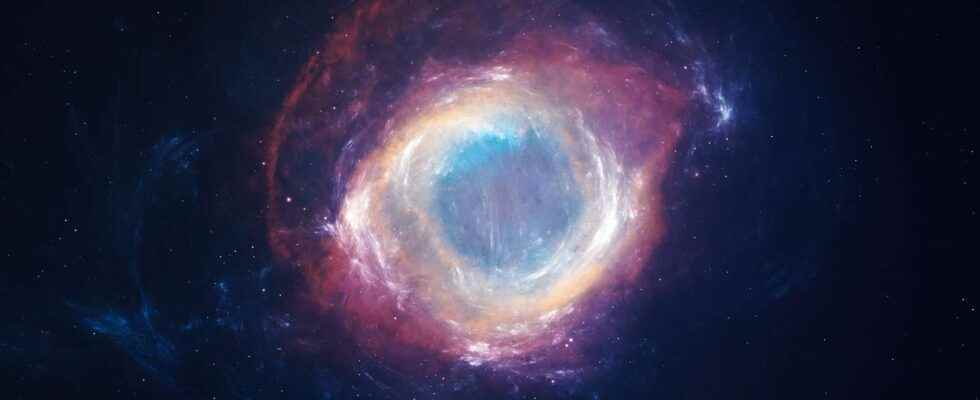A nebula is a interstellar cloud of gas and dust. Bright nebulae radiate the light gas that compose them (emission nebula) or reflect the light of stars (reflection nebula), or even both. Dark nebulae are clouds of gas and dust that are not illuminated. Planetary nebulae are shells of gas ejected by stars at the end of their life.
Story
Until the early twentieth century, the term nebula is used to refer to any celestial object of appearance diffuse.
In 1920, the astronomer Edwin hubble shows that the nebulous aspect of some stars that can be observed is only due to the resolution insufficient instruments used. Since that date, a nebula has been characterized by any region of the interstellar medium particularly rich in gas (generally from thehydrogen) or in interstellar dust or both.
How is a nebula formed?
When a star disappears, there is a gigantic explosion called a supernova. A cloud of gas and dust forms when debris is thrown by the explosion: the nebula. A very massive star can cause a very violent explosion.
Stars are formed in nebulae, under the effect of gravity gases and dust come together and eventually form a ball. Inside this ball, the gases turn very quickly which has the effect of increasing the temperature. When the heat becomes more intense, a nuclear reaction occurs and the gas ball turns into a star and shines on its own. Some dust and heavy particles can remain around the star, these are the remains of the nebula. This small cloud has the possibility of forming several balls, smaller and colder which will revolve around another star and which will be future planets, dwarf planets, comets, asteroids and satellites.
Planetary nebulae
Planetary nebulae have nothing to do with planets. It is a disc-shaped astronomical object that looks nebulous when viewed at low resolution in a small telescope. A planetary nebula looks like a planet and this is the reason why it gate this name. The term planetary was introduced in 1785 by William Herschel, the name is maintained to maintain historical uniformity. Generally, planetary nebulae are invisible to theeye since these objects are of low gloss.
They are actually gas bubbles that develop around a dying star at high temperature. Often planetary nebulae are very colorful and their images are spectacular! After this step, the star becomes a red giant.
However, the true nature of planetary nebulae remained unknown for a long time, until the mid-19th century when the first spectroscopic observations were made.
What type of telescope to observe a nebula?
The choice of an astronomical telescope is made according to the celestial object that one wishes to observe. The nebula is a deep sky object, it is very far away and less bright because of the distance. Unlike the planets of our solar system which are much closer to the Earth and which benefit from a good brightness.
To observe the deep sky in order to see nebulae, the shorter the telescope tube, the more ideal the conditions are and a large diameter is more appropriate. There are telescopes for mixed use, when you want to look at a maximum of elements in the sky.
The light pollution does not facilitate astronomical observations, the lighting of the city makes it impossible to observe the deep sky. To escape this fog bright, the best is to move away from a hundred kilometers from the big cities.
You will also be interested
Interested in what you just read?
.
fs4
